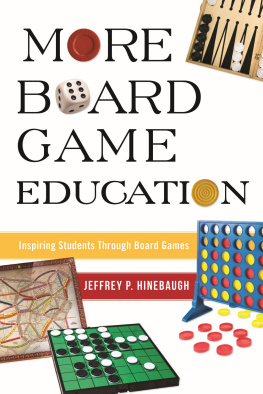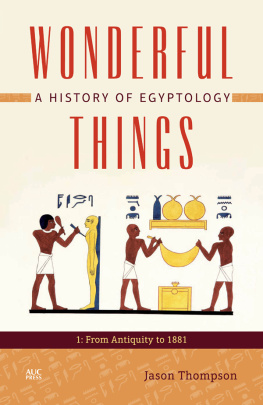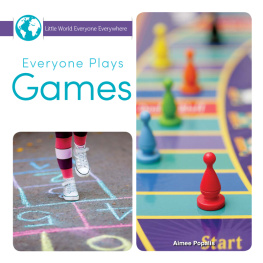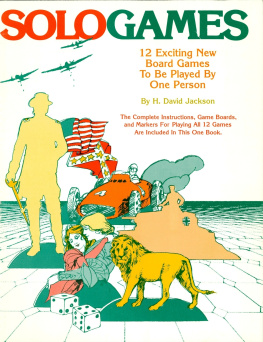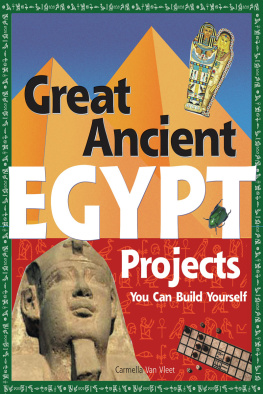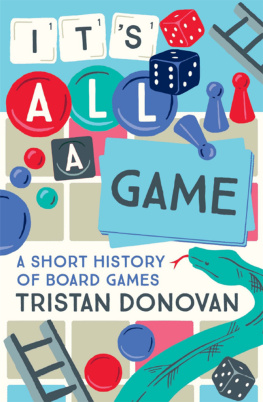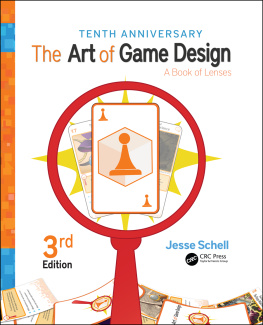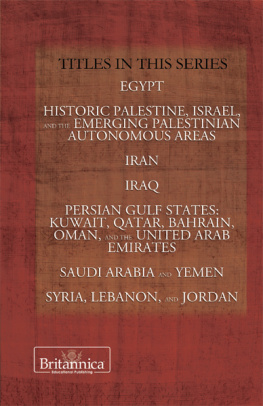Bloomsbury Egyptology
Series editor: Nicholas Reeves
Ancient Egyptian Technology and Innovation, Ian Shaw
Archaeologists, Tourists, Interpreters, Rachel Mairs and Maya Muratov
Asiatics in Middle Kingdom Egypt, Phyllis Saretta
Burial Customs in Ancient Egypt, Wolfram Grajetzki
Court Officials of the Egyptian Middle Kingdom, Wolfram Grajetzki
The Egyptian Oracle Project, edited by Robyn Gillam and Jeffrey Jacobson
Hidden Hands, Stephen Quirke
The Middle Kingdom of Ancient Egypt, Wolfram Grajetzki
Performance and Drama in Ancient Egypt, Robyn Gillam

Contents
Figures
All drawings, unless otherwise indicated, were made by Jennifer Steffey at the American Museum of Natural History in New York, who also designed the maps for each of the chapters. Dimensions of objects are indicated when available either as a scale on the photograph or in the caption.
Casting devices from Egypt and Sudan.
.
Mehen board demonstrating a Predynastic rendering of the game.
Mehen board bearing the name of Hor Aha.
Second Dynasty mehen board accompanied by spherical playing pieces.
Painting from the tomb of Hesy-Re showing mehen, senet and men.
Ivory mehen piece from Abydos in the form of a couchant lion.
Mehen game from Episkopi Phaneromeni, Cyprus.
.
Drawing of senet patterns, showing markings common during different periods.
Drawing of scene from the mastaba of Nikauhor showing senet playing.
Facsimile of a painting from the tomb of Nefertari.
Senet boards on terracotta platters from Twenty-Sixth Dynasty fortress at Tell Defenneh.
Playing pieces collected by F.G. Hilton Price.
Drawing of Merenptah playing senet.
Senet game from Arad, with drilled depressions as the playing spaces.
Senet game from Hazor, with the game of twenty on the opposite side.
Senet games from the Episkopi region, Cyprus.
Senet game of Late Period date, with the game of thirty-three on the opposite face.
Map of the game of twenty from the mid-third to the first millennium BCE .
The royal game of Ur with gaming pieces and tetrahedrons.
The game of twenty in the second and first millennia BCE , and the route of play.
Playing scenes A, B and C in the tombs of Baqet III and Khety, Beni Hasan.
Game of twenty from Thebes with senet on the opposite side.
Ostracon from Deir el-Medina.
Drawing of the Turin Papyrus with four games.
Map of the game of hounds and jackals during the second and first millennia BCE .
Game of hounds and jackals from Thebes.
Violin-shaped game board.
Drawing of hippopotamus-shaped game board.
Turtle stand or simulacra from Dra Abu el-Naga.
Playing scene in Beni Hasan, probably from Tomb 17.
Boards from the deposit of the temple of Inshushinak, Susa.
Reconstruction of the numbering sequence of the holes.
Coptic board game.
.
Example of a Roman games context at Palmyra, Syria.
Five lines at the Luxor temple and at Qasr al Ghweita.
Drawings of duodecim scripta boards from Qustul and Dawwi.
Duodecim scripta boards at Kom Ombo.
Drawing of a terracotta game board.
Latrunculi board at Kom Ombo.
Merels boards at Dendera, Kom el-Dekka, Kom Ombo and Silsila.
Drawing of a nine-mens-morris board as found on a column at the Ramesseum.
Drawing of a marble lane.
Two unidentified game boards at Beni Hasan and Silsila.
Possible seeja board at the Kharga Oasis.
Example of an Arab or Ottoman games context at Petra, Jordan and on Sai Island, Sudan.
Placement of first pieces on a seeja board.
Examples of seeja boards at Silsila, Medamoud, and el-Kab.
Examples of tb boards at el-Kab.
Drawing of a mancala board at the Third Pyramid, Gizeh.
Sudanese mancala boards carved in the temple of Tiye, Sedeinga, and on the temple of Soleb.
Table
Table with types of marking and distinct shapes for special squares in Egypt.
First of all, we would like to thank Nick Reeves for initiating this book, Anna MacDiarmid and the staff at Bloomsbury Academic Press for their support in the process as well as two anonymous reviewers for their constructive and valuable comments.
At the Metropolitan Museum of Art, we are indebted to the Department of Egyptian Art, led by Lila Acheson Wallace Curator in Charge Diana Craig Patch, for allowing us to study games in the collection, and in particular to Niv Allon, Elizabeth Fiorentino, Janice Kamrin, Marsha Hill, Adela Oppenheim, Catharine Roehrig, Morena Stefanova, as well as Ann Heywood from the Sherman Fairchild Center for Objects Conservation for their assistance in object or text studies and/or image requests. We wish to acknowledge the Department of Ancient Near Eastern Art, and Curator in Charge Joan Aruz, for their considerable support, and especially Blair Fowlkes-Childs, Elizabeth Knott and Michael Seymour for their contributions.
Ben Haring and Olaf Kaper (Leiden University), Pavel Onderka (Narodni Muzeum, Prague), Rudolf Haensch (Kommision fr Alte Geschichte und Epigraphik des Deutschen Archaeologischen Instituts), Dennys Frenez (Universit di Bologna), Mark Kenoyer (University of Wisconsin), Jennifer Webb and David Frankel provided us with helpful information, and special mention should be made of our colleagues at Arizona State University, Nancy Serwint, Leif Jonsson and Kostalena Michelaki, as well as Annie Caubet (Muse du Louvre) and Francesco Tiradritti (Universit di Enna Unikore) for their invaluable contribution to the progress of our research.
Thanks to Dr. Abdel-Hamid (Egyptian Museum, Cairo), Sara Al-Ashmawi (Egyptian Museum, Cairo), Nadine Cherpion (Institut Franais dArchologie Orientale, Cairo), Nevine Kamal (Institut Franais dArchologie Orientale, Cairo), Yael Barschak (Israel Antiquities Authority), Christopher Sutherns (British Museum), Tracey Golding (Petrie Museum), Vincent Rondot (Muse du Louvre) and Isabelle Bardis-Fronty (Muse de Cluny) for facilitating access to images and granting permission.
Special thanks to Maria Nilsson (Lund University) and John Ward for their generosity in supplying multiple images for this publication, to Paul Whelan for his illustration, and also to Stuart Swiny for photographs, insightful discussion and access to unpublished material. We are grateful to Vincent Francigny (Section Franaise de la Direction des Antiquits du Soudan), Alexandra Christopoulou (National Archaeological Museum, Athens), Eleni Tourna (National Archaeological Museum, Athens), Marie-Nol Bellessort (cole du Louvre), Olga Fast (gyptisches Museum, Bonn), Irving Finkel (British Museum), Stephen Quirke (Petrie Museum), Rachael Sparks (Institute of Archaeology, London), Ashley Cook (World Museum, Liverpool), John Wyatt (Griffith Institute and Bodleian Library, Oxford), Christopher Dobbs (University of Missouri), Jay VanRensselaer (Johns Hopkins University, Baltimore), Jack D.M. Green (Oriental Institute Museum, Chicago), Linda Evans (Macquarie University, Sydney), Naguib Kanawati (Australian Centre for Egyptology), Mara Antonia Garca Martnez (Tamkang University of Taipei), Christine Lilyquist and Peter Michaelsen for answering our inquiries. We owe particular thanks to Rozenn Bailleul-LeSuer (University of Chicago) for valuable advice, Ulrich Schdler (Swiss Museum of Games) for his insights and Constance Dickmeyer for commenting on our text. Finally, we are most grateful for the many drawings provided by Jennifer Steffey at the American Museum of Natural History in New York.
Next page

